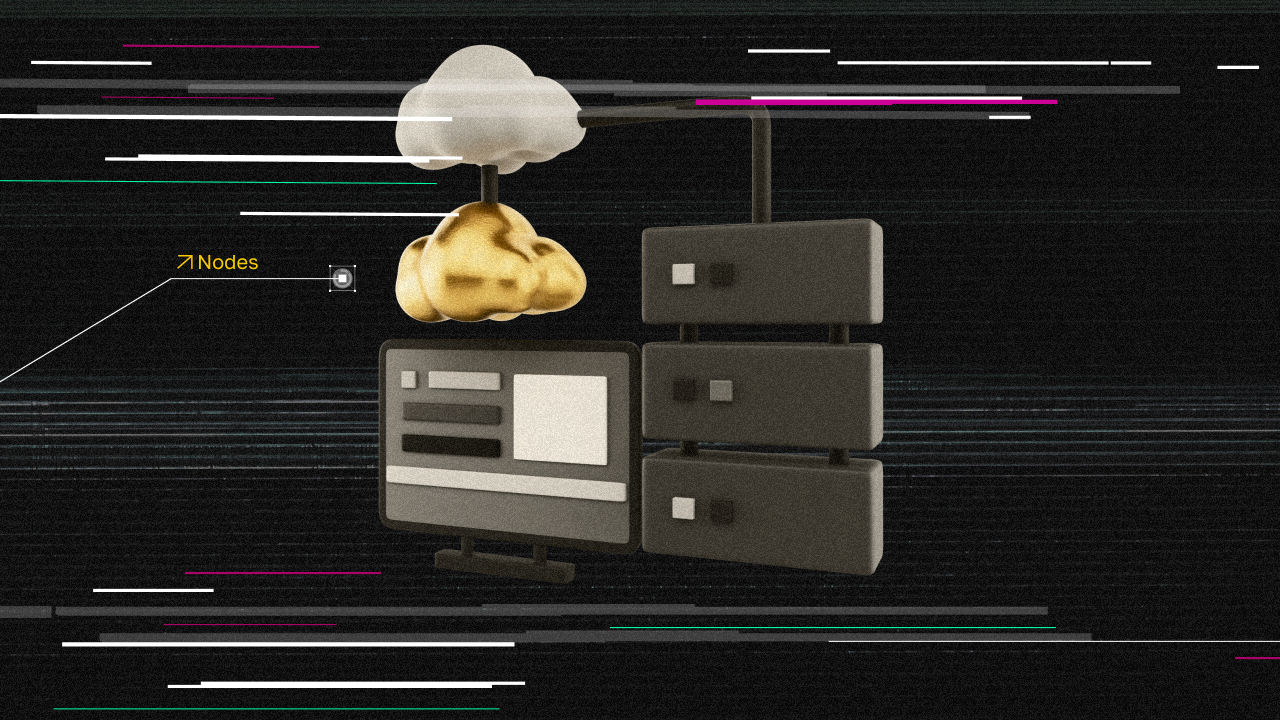How Blockchain Works: A Deep Dive into Nodes

Cryptocurrencies and blockchain wouldn’t exist without nodes. These are the foundational components that power decentralized networks. Understanding what nodes are, how they function, and why they matter is key to grasping blockchain mechanics, which is essential for designing secure, scalable Web3 systems.
What Is a Node in Blockchain?
A node is any computer or server connected to a blockchain network. Nodes perform various functions, from simply storing data to validating transactions and participating in block creation. Each node can (and often does) hold a full or partial copy of the blockchain, staying synchronized with other participants.
A node requires constant internet access and specialized software. An offline device cannot be an active part of a decentralized system.
Core responsibilities of nodes include:
- Storing and sharing transaction data
- Verifying new blocks against network rules
- Supporting consensus between participants
Why Nodes Are the Backbone of Decentralization
Blockchain's power lies in its distributed nature. Thousands of nodes spread across the globe operate independently but synchronize under a shared protocol. This means that the network remains fully functional even if some nodes fail or a country attempts censorship.
If a single entity controls all nodes, the network risks centralization. In contrast, networks with thousands of independent nodes are resilient and censorship-resistant. No authority can shut them down, alter the past, or enforce external control.
Many node operators are rewarded for their contributions by validating transactions, supporting liquidity, or maintaining uptime. This makes node operations valuable to the ecosystem and economically viable.
How Does a Node Work?
When a user sends a transaction, it is broadcast to the network and picked up by active nodes. Each node checks if the transaction follows protocol rules: Is the digital signature valid? Are the funds available?
If valid, the transaction is stored and relayed across the network. Eventually, it’s added to a block by miners or validators. The block is then appended to the chain, and each node updates its local copy of the blockchain.
Node synchronization happens continuously, ensuring data consistency and global consensus across the network.
Types of Blockchain Nodes
Different types of nodes serve different roles in the ecosystem:
Full Nodes
A full node stores the entire blockchain, from the genesis block to the latest transaction. It independently verifies every block and transaction without relying on third-party data.
These nodes are critical for decentralization and network integrity, but require significant storage and computing power.
Light Nodes (SPV Nodes)
Light nodes do not store the whole blockchain. Instead, they rely on full nodes for data and only download block headers and essential transaction information.
This approach is ideal for mobile wallets and browser extensions. Light nodes offer convenience but sacrifice some security and independence.
Mining Nodes
A mining node is responsible for block production. It validates transactions, bundles them into a block, and solves a mathematical challenge (in Proof-of-Work systems) to propose the block to the network.
Successful miners are rewarded with newly minted coins and transaction fees. These nodes require powerful hardware and high energy consumption.
Masternodes
Masternodes perform specialized functions depending on the blockchain protocol. These may include supporting private transactions, enabling instant payments, or participating in governance votes.
Running a masternode typically requires staking a large amount of the native token and maintaining constant uptime. In return, operators earn a share of network rewards.
Why Web3 Founders Should Care About Nodes
Understanding how nodes work is critical for any Web3 builder. Node architecture directly affects a product’s scalability, decentralization, and security.
When designing your protocol, ask:
- Will you build on an existing blockchain or launch your network?
- Who will run the nodes — your team, the community, or strategic partners?
- What incentives will node operators receive?
- How will consensus be achieved across nodes?
These choices shape tokenomics, infrastructure resilience, and the trust of both users and investors.
Final Thoughts
Nodes are the infrastructure layer of blockchain. Without them, there is no decentralization, transparency, or uptime. They enable cryptocurrencies, DeFi, DAOs, and decentralized applications. For Web3 founders, understanding nodes isn’t optional — it’s foundational. The right choices in node architecture today can determine your project’s success tomorrow.
Contact us if you're building a Web3 product and need expert guidance on everything from protocol design to node strategy and tokenomics. Follow Cware Academy for more technical deep dives into the foundations of blockchain, crypto infrastructure, and the future of decentralized systems.
